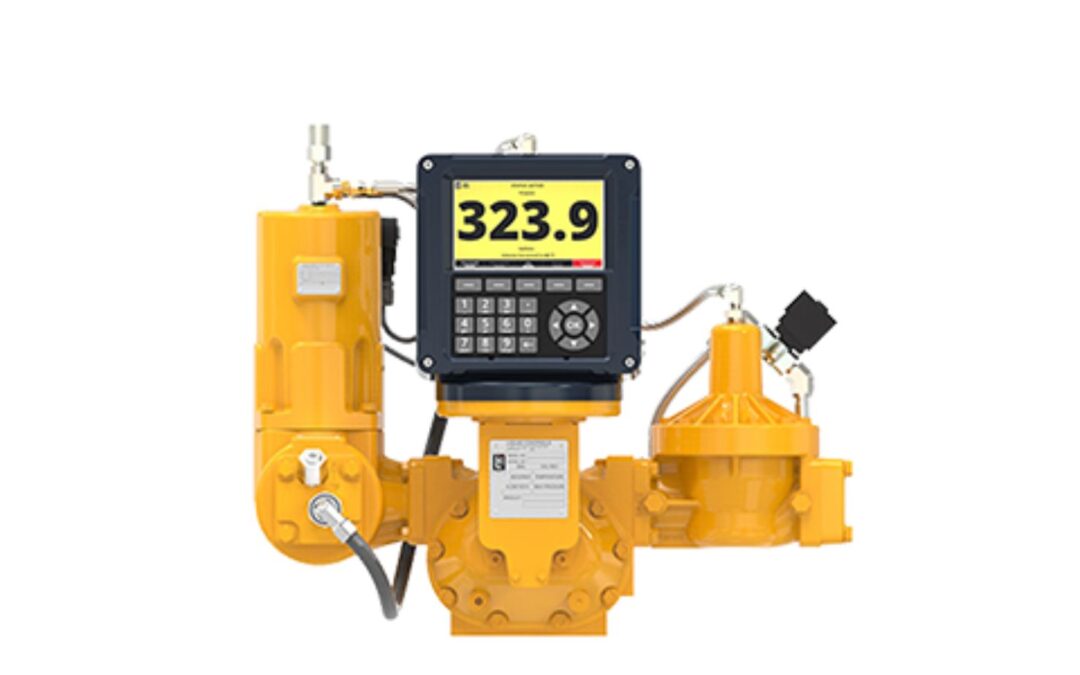What is terminal automation?
Terminal automation is a system that automates certain manual processes in a terminal, specifically around load authorisation, product movement, product measurement, documentation, and reporting. The software is flexible and open to integration with other systems and hardware, including metre skids, weight scales, tank gauging systems, and secure access control systems. These systems often bridge the gap between the Enterprise Resource Planning (ERP) and Supervisory Control and Data Acquisition (SCADA) systems.
Terminal automation is critical for modern industries for several reasons:
- It allows for more effective positioning of containers and equipment to increase throughput with the same assets.
- It offers a real-time graphical visualisation of terminal activity that can be configured to match a terminal facility setup.
- It can handle customer orders and even allow position holders or stock holders to schedule their movements directly through the system.
- It allows for the integration of multiple transportation methods into the terminal operations, including truck, rail, barge, and pipeline.
Terminal automation systems that have open, flexible designs usually provide the best returns on investment for companies storing large quantities of liquid. This is because their data can move easily and quickly, creating value for business needs when required.
Terminal automation plays a crucial role in increasing efficiency, reducing errors, improving safety, and ultimately enhancing profitability in modern industries.
How Does Terminal Automation Work, and What Are Its Core Functions?
Liquid Controls, a unit of IDEX Corporation, provides terminal automation solutions that automate certain manual processes in a terminal. The core functions of Liquid Controls’ terminal automation system include:- Load Authorisation: The system authorises the loading of products based on predefined rules and regulations.
- Product Movement: The system automates the movement of products in and out of the terminal via multiple transportation methods.
- Product Measurement: The system accurately measures the quantity of product being moved, ensuring precise inventory management.
- Documentation: The system generates necessary documents such as Bills of Lading (BOLs), operations monitoring, accounting, taxes, and Environmental Protection Agency (EPA) compliance.
- Reporting: The system provides highly configurable reports used for various purposes, including operations monitoring, accounting, taxes, and EPA compliance.
- Integration: The software is flexible and open to integration with other systems and hardware, including metre skids, weight scales, tank gauging systems, and secure access control systems. These systems often bridge the gap between the Enterprise Resource Planning (ERP) and Supervisory Control and Data Acquisition (SCADA) systems.
- Visualisation: Many terminal automation systems offer a real-time graphical visualisation of terminal activity that can be configured to match a terminal facility setup.
- Supply Chain Optimisation: Terminal automation systems can handle customer orders and even allow for position holders or stock holders to schedule their movements directly through the system. Terminal automation systems make it possible to coordinate various ways of transporting goods, like trucks, trains, boats, and pipelines, within the terminal’s operations.
What are the 4 types of automation systems?
The four main types of automation systems are:- Fixed Automation: Also known as “hard automation,” this type of automation is used for producing high volumes of simple products. The sequence of processing operations is fixed by the equipment configuration, and the operations are usually simple.
- Programmable Automation: This type of automation is used for batch production. The sequence of operations can be changed through programming, allowing for flexibility in the production process.
- Flexible Automation: Also known as “soft automation,” this type is used for low-to-medium volume production of a variety of products. It allows for easy changes in product design and sequence of operations.
- Integrated Automation: This type involves the integration of various systems and processes to create a fully automated production process. It’s often used in industries where high volumes of a variety of products are produced.
IDEX’s Liquid Controls Flowmeter is considered one of the best terminal automation systems due to its exceptional features and benefits:
- High Accuracy and Repeatability: The system ensures sustained accuracy better than +/- 0.05%. There is no metal-to-metal contact inside the measuring chamber, which means minimal deterioration in accuracy over time and fewer recalibrations. The repeatability is 0.02%.
- Low Maintenance: The system requires minimal maintenance due to its design.
- Long Service Life: Liquid Controls positive displacement flow metres are known worldwide for their exceptional accuracy, reliability, and longevity for truck loading applications.
- Compatibility: The system is easy to operate through larger key buttons and is automation compatible through RS485. It can manage preset valves (LF/HF), pump control signals, programmable digital input (permissive, Dead Man), and programmable pulse output.
- Security Features: The electronics are equipped with an alert system that makes the operator timely aware of the periodic maintenance plans like W&M stamping, calibration, strainer checks, etc. It also has improved security and audit trails.
- Increased Profitability: The system helps increase profitability by eliminating manual pricing errors.
- Ruggedness and Reliability: The system is rugged and reliable, with simplicity of operation and compatibility with industry-standard Epson printers.
- Approvals: The system is PESO and Weights & Measures approved.
Conclusion
Terminal automation is a pivotal component for modern industries seeking to streamline operations, enhance efficiency, and ensure compliance with regulations. Liquid Controls, a unit of IDEX Corporation, provides a comprehensive terminal automation system that encompasses load authorisation, product movement, precise measurement, documentation, and reporting. With a strong focus on accuracy, low maintenance, and compatibility, the IDEX Liquid Controls Flowmeter stands out as one of the best terminal automation systems available. Its ability to increase profitability, ensure security, and provide a user-friendly interface makes it an invaluable tool for industries reliant on precise measurement and streamlined operations. Investing in terminal automation, especially through the advanced features of the IDEX Liquid Controls Flowmeter, is an essential step in optimizing industrial processes in today’s fast-paced and regulated environments.
